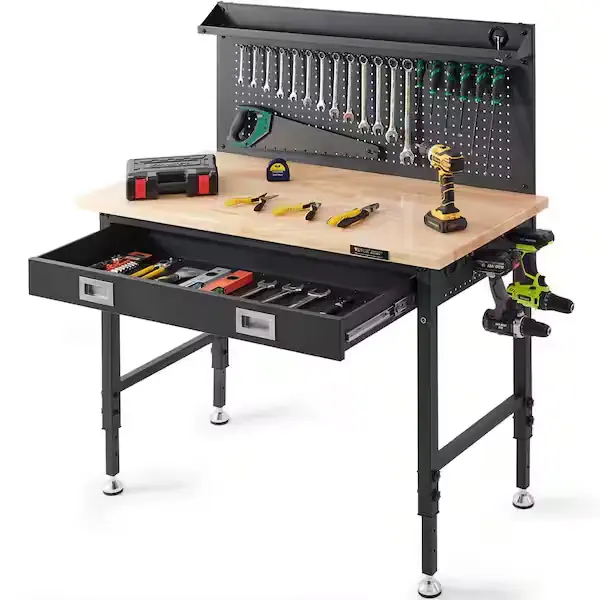Setting up a professional workshop requires careful consideration of core equipment, particularly workbenches that can withstand demanding industrial applications. When you shop heavy duty steel workbenches online, you’re investing in the foundation of your workspace efficiency and productivity. Modern fabrication shops, automotive repair centers, and manufacturing facilities depend on robust steel workbenches to maintain operational excellence while supporting equipment loads that can exceed several hundred pounds. The digital marketplace offers unprecedented access to industrial-grade workbenches, but navigating specifications and quality standards requires technical expertise to avoid costly purchasing mistakes.
Understanding Load Capacity Requirements
Steel workbench specifications typically include static load ratings ranging from 2,000 to 8,000 pounds, though premium models can support up to 12,000 pounds when properly distributed. The difference between static and dynamic loading becomes critical when selecting equipment for your specific applications. Static load refers to stationary weight distribution, while dynamic loads account for impact forces and operational stresses during heavy machining or assembly work.
Most industrial workbenches feature 12-gauge to 7-gauge steel construction, with thicker gauges providing superior strength but increasing overall weight. The gauge measurement works inversely – lower numbers indicate thicker steel. A 7-gauge steel top measures approximately 0.1793 inches thick, offering exceptional durability for precision work involving heavy machinery or repeated impact applications.
Frame Construction and Stability Analysis
Modern heavy-duty workbenches employ either welded or bolted frame assemblies, each offering distinct advantages depending on workshop requirements. Welded frames provide superior rigidity and eliminate potential loosening over time, making them ideal for high-vibration environments where precision machinery operates continuously. Bolted assemblies offer modularity and easier transportation but require periodic maintenance to ensure connection integrity.
Leg design significantly impacts workbench stability under load. Rectangular tubular legs typically measure 2×3 inches or 3×3 inches, with wall thickness ranging from 11-gauge to 7-gauge steel. Some manufacturers incorporate adjustable feet with load-distributing plates to accommodate uneven flooring while maintaining level working surfaces. Advanced models include vibration-dampening features essential for precision measurement and delicate assembly operations.
Surface Material Considerations
Steel workbench tops come in various configurations, including solid steel plates, perforated surfaces, and composite materials. Solid 12-gauge steel tops provide excellent durability but can be challenging to modify for specific tooling requirements. Perforated tops with standardized hole patterns accommodate clamping systems and workholding fixtures but may compromise surface integrity under extreme loads.
Some workbenches feature replaceable top inserts or modular surface systems that allow customization without compromising the underlying steel structure. These systems prove particularly valuable in multi-purpose workshops where different projects require varying surface characteristics.
Storage Integration and Workspace Optimization
Contemporary steel workbenches often incorporate integrated storage solutions including drawer systems, cabinet assemblies, and overhead tool organization. Drawer slides rated for 100-150 pounds ensure smooth operation even when loaded with heavy tooling. Full-extension slides provide complete drawer access, improving efficiency during complex assembly procedures.
Cabinet construction typically mirrors the workbench frame specifications, utilizing matching gauge steel and finishing processes. Some models include specialized storage for precision instruments, requiring controlled environments to prevent moisture-related corrosion or temperature fluctuations that could affect calibration accuracy.
Quality Assessment and Vendor Verification
Evaluating online vendors requires careful examination of technical specifications, customer testimonials, and warranty coverage. Reputable manufacturers provide detailed engineering drawings, load testing certifications, and compliance documentation for industrial safety standards. Look for vendors offering technical support during the selection process, as proper workbench sizing directly impacts workshop productivity and safety compliance.

